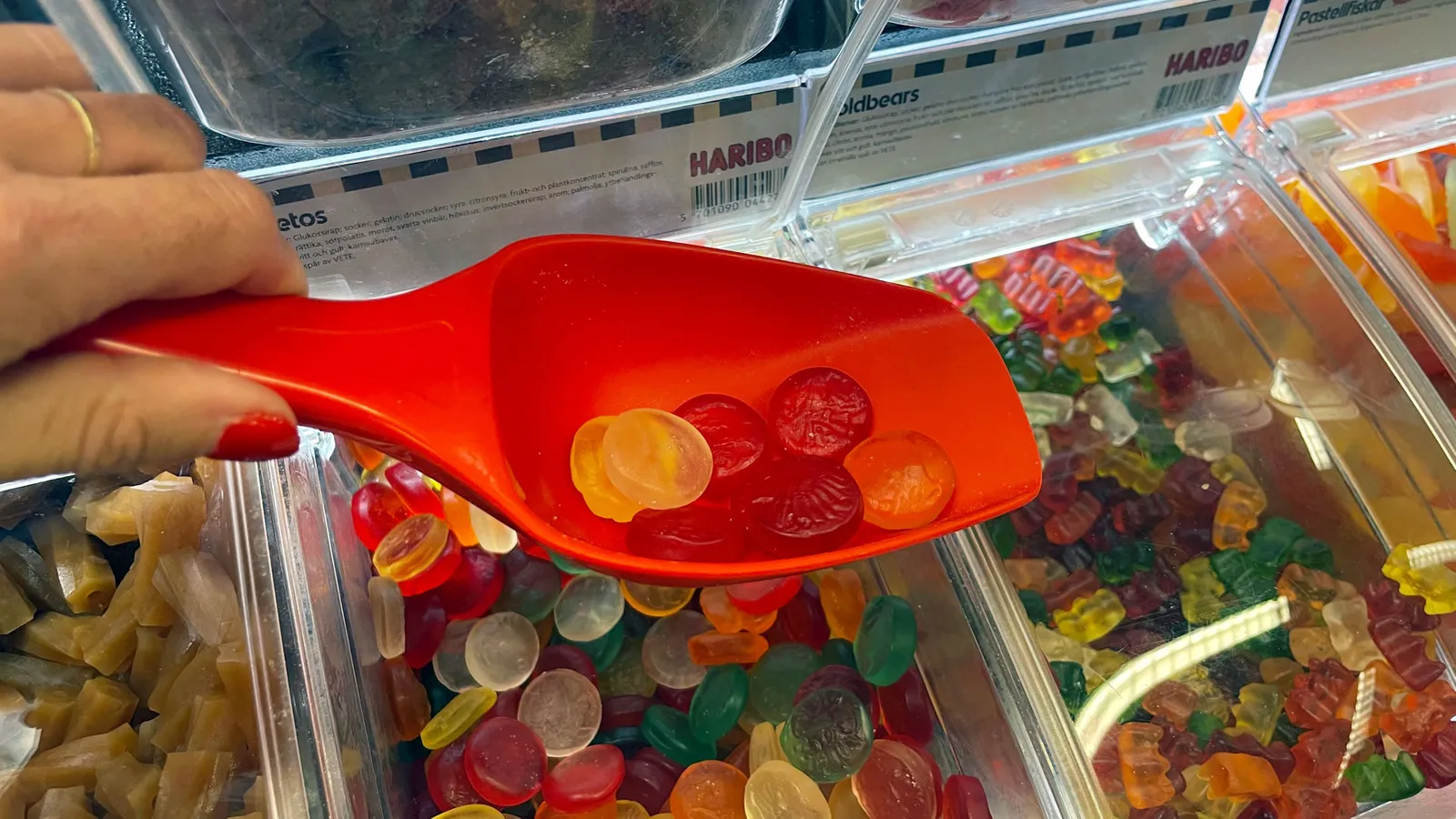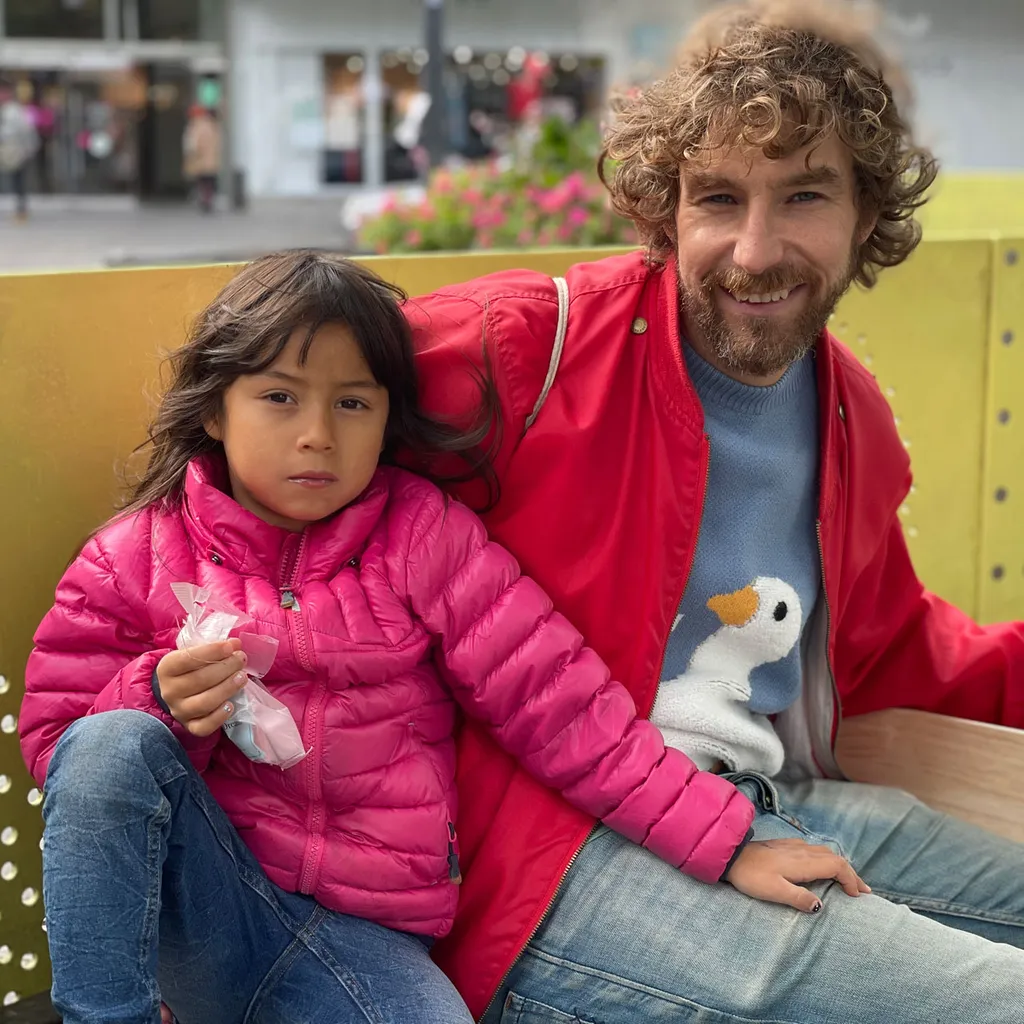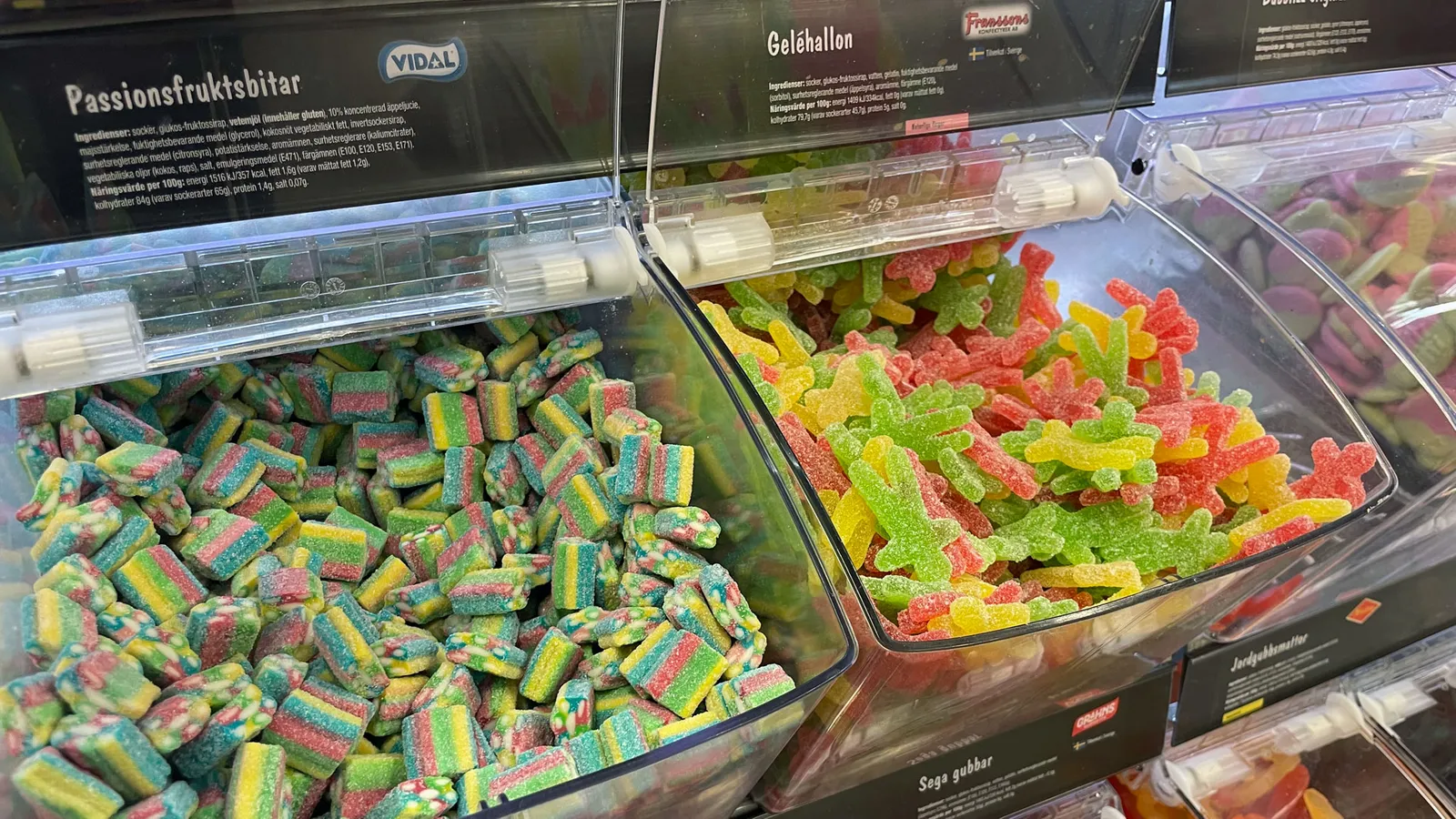Swedish children look forward to the weekend for their once-weekly candy fix. But beyond being a treat, these Saturday sweets teach a bigger lesson.

On a Saturday afternoon, the cobblestones of Stockholm’s Liljeholmen square are abuzz with families weaving in and out of the local shopping mall. Look closely, and you’ll spot children tightly clutching a perennial weekly accessory: a bag of loose pick-and-mix.
Swedes are so into the norm of buying and eating candy on Saturdays they’ve even got a special word for it: lördagsgodis, whichliterally translates to ‘Saturday sweets’.
“Lördagsgodis has always been ‘a thing’,” says Robert Lundin, who grew up in the 80s and has just bought marshmallows with his five-year-old daughter. “You wait for Saturday to get your candy. And it’s like a small, big event with your parents. And now I do it with my daughter as well.”
The lördagsgodis concept dates to the 1950s. Swedish medical authorities began recommending sweets as a once-a-week treat, to try and limit rising cases of tooth decay as the country became richer, says Sofi Tegsveden Deveaux, an author and lecturer on Swedish culture and values. Swedes’ propensity to “trust the state a lot” encouraged them to follow and stick to the advice to restrict eating sweets to Saturdays, she argues, with the trend evolving into the beloved family-oriented activity that exists today.
“The kids like it, and kids need some good things for themselves,” says Hui Jiang, 34. She moved to Sweden from China a decade ago, and has adopted the tradition within her children, who begin jumping up and down the moment lördagsgodis is mentioned.

This penny candy is a sweet treat for anyone looking to unwind from the week. But cultural commentators and economists alike argue there’s a lot more to be learned from the lördagsgodis tradition – particularly, it encourages children to start thinking about weekly budgeting, and feeds into a culture that champions independence from a young age.
“My children got their bank cards when they were six years old, and every week I deposit 20 kronor into them. Then they go to the store every Saturday and count out sweets into a bag,” says Tegsveden Deveaux, who has seven-year-old twins. “They have to budget for their Saturday candy, and if they want to buy toys or something else that they do not ‘need’,” she explains. In her local store, 20 kronor can buy up to 40 loose pick-and-mix. Her daughter tends to come home with a bulging bag, while her son chooses to buy fewer and lighter sweets so he has more money left in his account.
Promoting financial freedom
While fizzy cola bottles, red jelly lips or salted liquorice might initially seem unlikely symbols of financial freedom, Tegsveden Deveaux says her family is far from alone when it comes to using these lördagsgodis staples as an early lesson in money management. Penny sweets are typically among the first items children regularly spend money on if they’re given weekly pocket money, she says, which has been commonplace in Sweden since the 1960s.
Around seven out of 10 Swedish children currently get a weekly or monthly allowance, according to 2020 data shared by Swedbank, one of the country’s high-street banks. Six out of 10 parents surveyed said they and their children had some form of agreement about what their money should be used for.

Americo Fernández, a household economist and personal-finance podcaster for SEB, another major Nordic bank chain, agrees the lördagsgodis tradition is “definitely” a useful tool in helping Swedish children to understand the value of money.
“It’s difficult to talk to an eight-year-old small person and try to explain to them the importance of saving,” he argues. By contrast, giving children money to put aside for weekly sweets or other small luxuries can teach them about basic financial planning. “It’s [easier] to understand that if I give you 20 kronor, if you spend it now, you won’t have any more during the rest of the month, for example, or the week.”
Swedbank’s research suggests the average weekly pocket money for a seven-year-old in Sweden is 20 kronor ($2.30, £1.70). This rises to 500 kronor a month at the age of 15, when it becomes more common for children to put this towards clothes or activities with friends, such as meals out or going to the movies. There’s strong evidence that encouraging financial responsibility from a young age is connected to healthy saving habits: more than seven out of 10 parents surveyed by Swedbank said their children were either sometimes or always able to save part of their allowance.
“Most Swedish parents increase the weekly or monthly allowance gradually, but with each increase, the children are responsible for one more thing that they must buy themselves,” explains Tegsveden Deveaux.

The role of the state
Americo Fernández believes parents in other countries could learn a lot from Swedes’ tendency to talk about budgeting and personal finances with children from a young age, at a time when household debt is rocketing around the world. But he says it’s important to put Swedes’ spending habits in the context of the country’s long history of social welfare and a culture that promotes individualism and independence at all ages.
Education is free and healthcare is state subsidised in Sweden, which can help reduce families’ financial pressures. Plus, all parents, regardless of income, are entitled to a monthly child benefit of 1,250 kronor ($144, £105) a month, until their child turns 16. This, explains Fernández, “gives practically everyone the possibility to either save for their children or give them a weekly or monthly allowance” in a way that simply isn’t possible in many other societies.
When Swedish children turn 16, the state stops paying child benefit to their parents and starts giving them the same amount directly as a form of study grant, as long as they remain in education. “So, the idea with the weekly or monthly allowance is you’re slowly building up towards that [study] sum,” adds Tegsveden Deveaux. “It’s quite a smooth transition from being given money from their parents to being given money by the state.”
At Liljeholmen’s shopping complex, 35-year-old Fanny Hökby vividly recalls that she “wasn’t very good” at saving her first pocket money, which she mostly spent on lördagsgodis and toys. But by the age of 16 she’d figured out how to use her study grant to budget for clothes, gifts and outings with friends, and she agrees that a monthly allowance can be an educational tool for children and young people.
Swedes are so into the norm of buying and eating candy on Saturdays they’ve even got a special word for it: lördagsgodis
Tegsveden Deveaux says many Swedish parents believe giving children pocket money from a young age also helps prepare them for budgeting with further education student grants and loans if they continue studying, or spending their first salaries after high school. Swedes typically leave their family home at the age of just 18 or 19, earlier than most Europeans.
“Young Swedes …They have to take care of themselves pretty fast, even though they get a lot of subsidies from the state and student loans,” agrees Fernández. “That’s a huge difference [to some countries]. For example, when I studied abroad in Spain, if I compare it with that, I saw a lot of my peers still living at home, still being supported by their parents, and still after university, still living at home.”
The future of lördagsgodis
Whether children are taught to budget using coins and notes or bank transfers and apps, there’s little debate in Sweden about whether or not the lördagsgodis trend will continue – even as Sweden moves increasingly toward a cashless society and digital wallets.
“I think that the tradition will continue of children spending their first allowances on candy… I don’t see that changing,” argues Fernández.
However, he points out it’s becoming more common to indulge in the likes of fizzy snakes or foam bananas on weeknights, too, with national data suggesting the consumption of chocolate and confectionery has been rising steadily in recent years. “People may be starting to eat more [sweets] during the week, but they will still not let go of the traditional lördagsgodis,” agrees Deveaux. “It’s really deeply ingrained.”
On Liljeholmen’s cobbles, 38-year-old Hanna Sjöberg is rushing back from the shops to catch the tram with her partner and their eight-year-old daughter. But she responds in a flash when asked whether her family embraces lördagsgodis on a weekly basis. “Yeah. Otherwise there would be lots of tears!”


